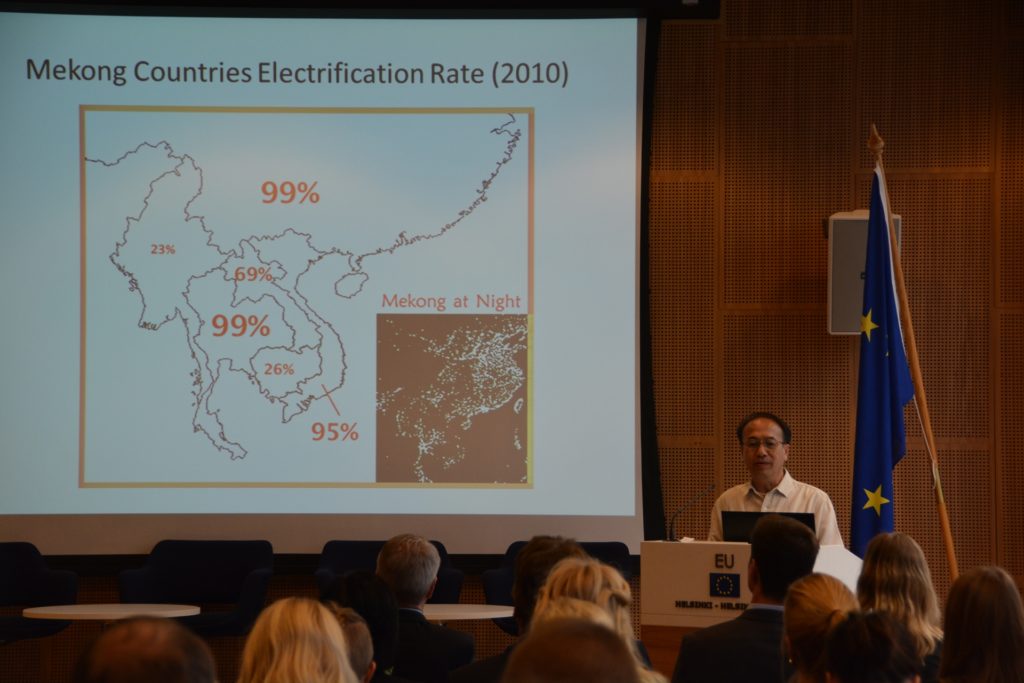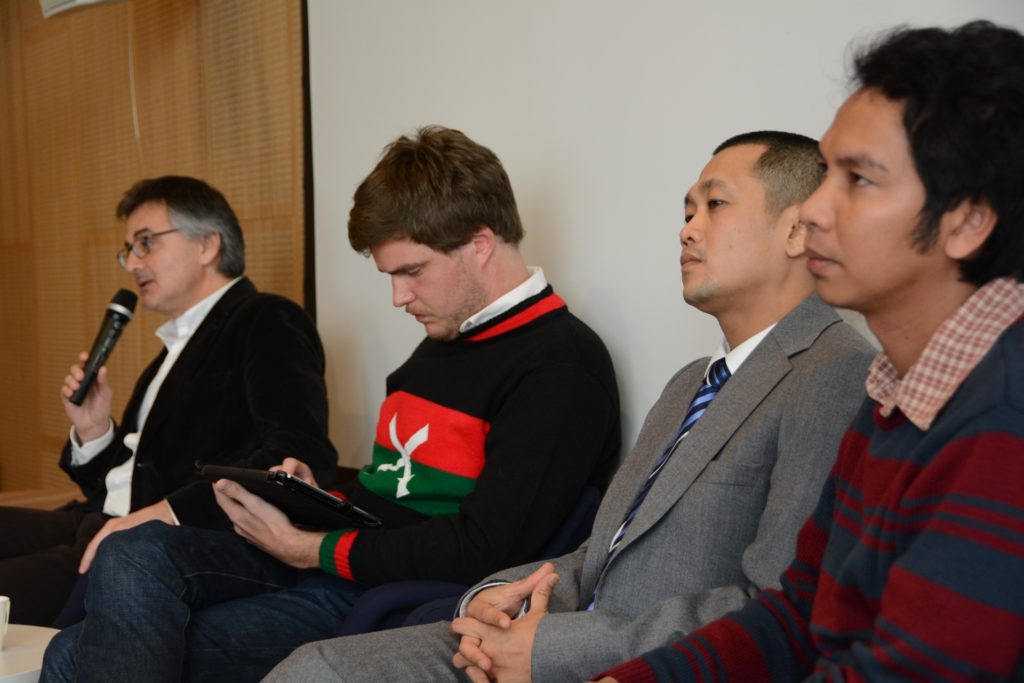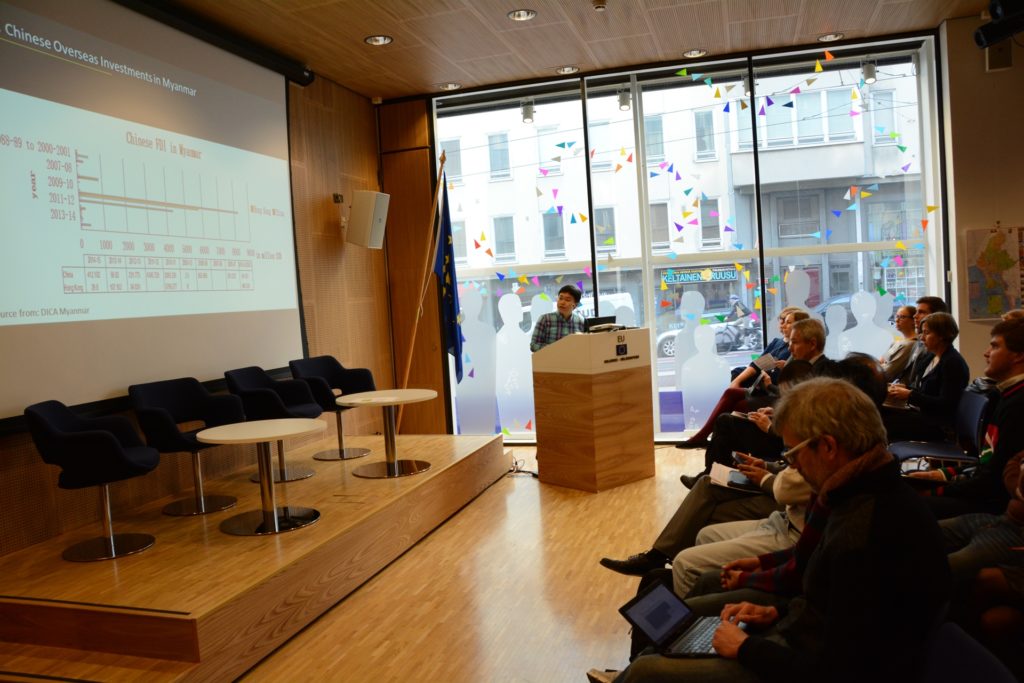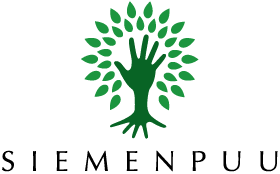[Titta Lassila] On 30 September, Siemenpuu Foundation organized a unique seminar that brought together Finnish civil society actors to discuss how they can best help and contribute to developing cooperation with Myanmar (formerly Burma). In addition to Siemenpuu Foundation, the event was organized by Abilis Foundation, the Finnish Disabled People’s International Development Association (FIDIDA), Finn Church Aid, the Finnish Evangelical Lutheran Mission (FELM), the Finnish Refugee Council (FRC) and Kepa and the aim of the day was to discuss Myanmar’s development challenges.
The Finnish government is currently planning its development cooperation strategy with Myanmar. The fragile state of the country, ongoing armed conflicts by different ethnic groups and global interest in Myanmar’s natural resources has created a variety of challenges in terms of the structure and approach to cooperation. Who should Finland listen to and actually cooperate with in such a sensitive environment? How can the voice of local people be strengthened in this political turmoil? Thus, this event was a unique opportunity to initiate discussion between the Finnish and Burmese civil societies as well as the Finnish Ministry for Foreign Affairs.
Siemenpuu’s partner in the Mekong region (Myanmar, Cambodia, Lao PDR, Thailand, Vietnam and Yunnan/China), Mekong Energy and Ecology Network (MEE Net), has been working for a just and sustainable energy policy since 2008. The network consists of some 40 organizations from all the six countries. Siemenpuu invited two representatives of MEE Net to Finland, Witoon Permpongsacharoen, Director of MEE Net, and Kyi Phyo, MEE Net’s Myanmar coordinator.

In the seminar, Witoon Permpongsacharoen explained how inadequate and unequal electricity distribution (pdf) is in Myanmar compared with neighbouring countries. Less than 30% of the country has regular access to electricity, and most energy projects are designed to feed foreign needs and export contracts. The gap between local people and foreign investors is huge, and ongoing internal conflict makes the work of local NGOs and INGOs very difficult.
Kyi Phyo stated, however, that Burmese civil society (pdf) is very strong and active, and is not afraid to take action. In his presentation he gave an example of a successful campaign against the construction of the Myitsone dam, which has – at least for now – been suspended after a strong campaign by local movements. Nonetheless, there remain dozens of other dam projects under planning or construction, so the battle continues.
Locals are excluded from development
During the seminar break I discussed with Kyi Phyo and the coordinator of Burmese people living in Finland, Aung Nyein Chan, about the current nature of political discussion in Myanmar. They told me that the biggest problem is that the United Nations, the government, the private sector and donors (re-named “development partners”) are having a loud discussion – but without local people. Corruption and lack of transparency is rooted in the Burmese political system, and business continues as usual.
In the panel discussion Witoon Permpongsacharoen emphasized that the process of planning and implementing development cooperation between Finland and Myanmar needs to have strong involvement from civil society organizations (CSOs). Auing Nyein Chan stressed that the Finnish Foreign Ministry should take local conflicts related to the “peace process” seriously, and also noted that there is a large difference between the public image of Burmese politics and the real opinions of the people, who have no trust at all in decision-makers.

Myanmar has begun to receive large amounts of international aid (pdf) after the end of military dictatorship. Massimo Lanciotti from the Finnish Refugee Council, who was another speaker, stated that hundreds of millions of US dollars have been committed specifically to “peace and conflict resolution”, but it might be worth asking where all that money is going to.
Massimo Lanciotti gave an example of how in one case bilateral development cooperation implemented by Japan had failed to consult the communities in the project or recognize the actual scope and background of the conflict in Myanmar.
“Burma’s got everything”
Myanmar seems to have the so-called resource curse. This means that the plentiful natural resources of the country might be more an economic curse than a blessing. As researcher Lauri Nio highlighted in the panel discussion, “Burma’s got everything; oil, gas, diamonds, gold, copper,…and probably the cheapest workforce there is“. The pressure from neighbouring countries, especially China and Thailand, is increasing, and everyone wants to get their share of Myanmar’s natural riches.

According to Chinese researcher Yu Yin, Chinese investments (pdf) account for about one-third of all foreign investment in Myanmar, and almost all of this goes to the extractive sectors: hydropower, oil and gas and mining. The most controversial Chinese projects have faced strong local opposition, and three of them have been put on hold (Myistone dam being one of them).
The extractive industries are blooming, rubber plantations are expanding and the illegal logging of the rain forest continues, but the strength and perseverance of local movements provides hope for change. All the panellists of the discussion emphasized the need to build development cooperation from the bottom-up; with small grants to local groups, and by enabling diverse grassroots action. MEE Net is an example of this type of work. Hopefully the Finnish Ministry for Foreign Affairs listened carefully to the examples and will continue to do so in its strategic planning. We do not want Finnish development cooperation with Myanmar to miss the point and exclude local people, do we?
Titta Lassila
Titta Lassila is a member of Siemenpuu Foundation’s Executive Board
Photos: Timo Kuronen
